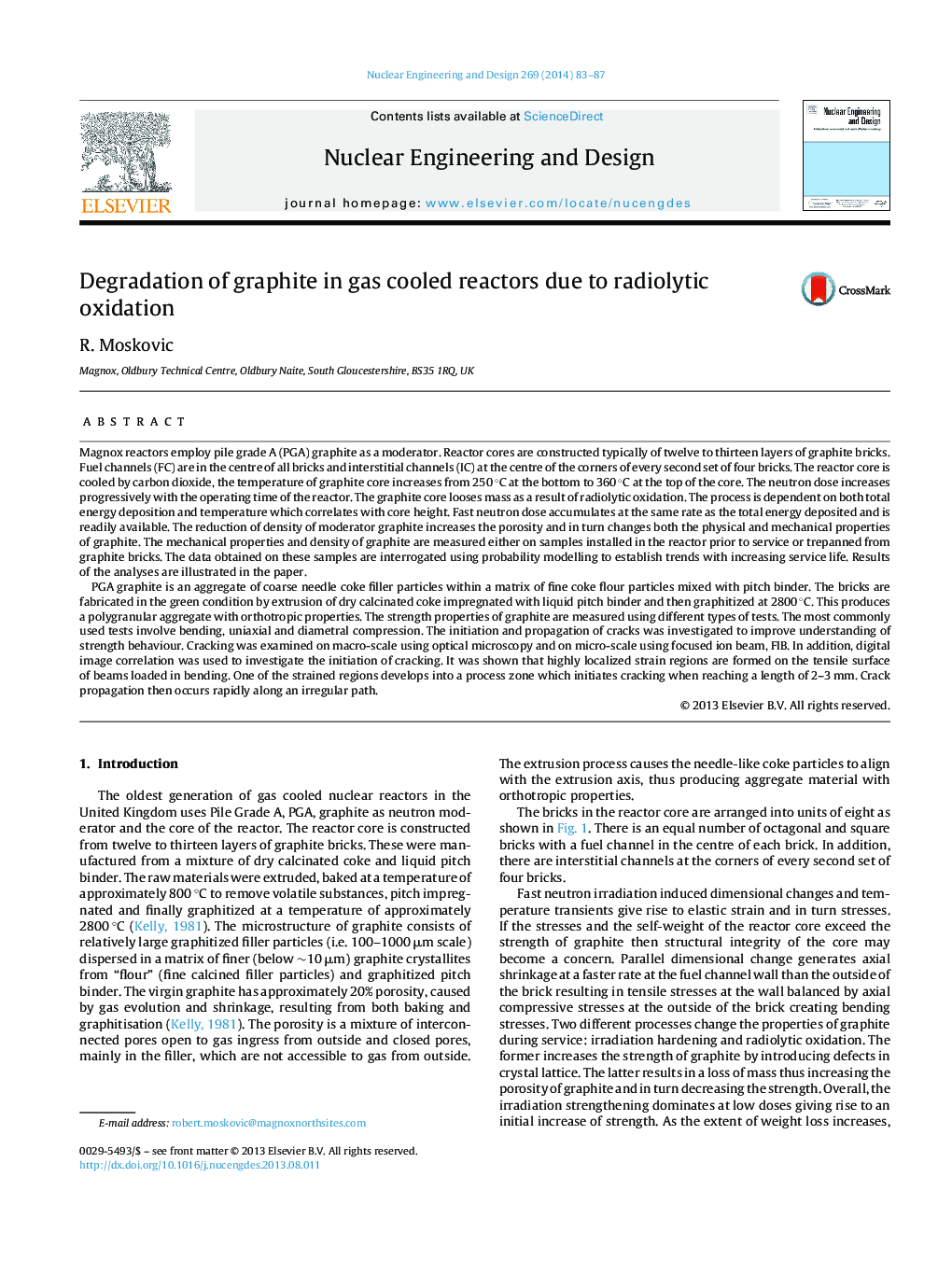| کد مقاله | کد نشریه | سال انتشار | مقاله انگلیسی | نسخه تمام متن |
|---|---|---|---|---|
| 296595 | 511730 | 2014 | 5 صفحه PDF | دانلود رایگان |
Magnox reactors employ pile grade A (PGA) graphite as a moderator. Reactor cores are constructed typically of twelve to thirteen layers of graphite bricks. Fuel channels (FC) are in the centre of all bricks and interstitial channels (IC) at the centre of the corners of every second set of four bricks. The reactor core is cooled by carbon dioxide, the temperature of graphite core increases from 250 °C at the bottom to 360 °C at the top of the core. The neutron dose increases progressively with the operating time of the reactor. The graphite core looses mass as a result of radiolytic oxidation. The process is dependent on both total energy deposition and temperature which correlates with core height. Fast neutron dose accumulates at the same rate as the total energy deposited and is readily available. The reduction of density of moderator graphite increases the porosity and in turn changes both the physical and mechanical properties of graphite. The mechanical properties and density of graphite are measured either on samples installed in the reactor prior to service or trepanned from graphite bricks. The data obtained on these samples are interrogated using probability modelling to establish trends with increasing service life. Results of the analyses are illustrated in the paper.PGA graphite is an aggregate of coarse needle coke filler particles within a matrix of fine coke flour particles mixed with pitch binder. The bricks are fabricated in the green condition by extrusion of dry calcinated coke impregnated with liquid pitch binder and then graphitized at 2800 °C. This produces a polygranular aggregate with orthotropic properties. The strength properties of graphite are measured using different types of tests. The most commonly used tests involve bending, uniaxial and diametral compression. The initiation and propagation of cracks was investigated to improve understanding of strength behaviour. Cracking was examined on macro-scale using optical microscopy and on micro-scale using focused ion beam, FIB. In addition, digital image correlation was used to investigate the initiation of cracking. It was shown that highly localized strain regions are formed on the tensile surface of beams loaded in bending. One of the strained regions develops into a process zone which initiates cracking when reaching a length of 2–3 mm. Crack propagation then occurs rapidly along an irregular path.
Journal: Nuclear Engineering and Design - Volume 269, 1 April 2014, Pages 83–87
